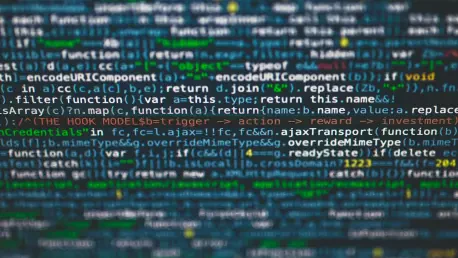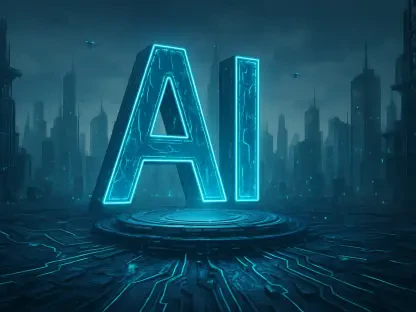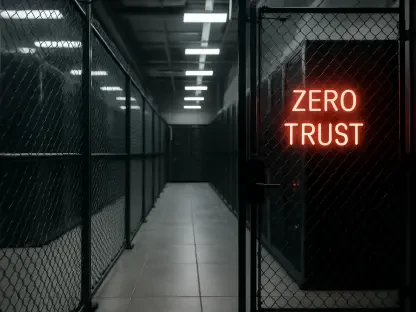What happens when the tools designed to make software development faster and smarter become a hidden liability? In an era where artificial intelligence (AI) is transforming the coding landscape, a startling 75% of developers rely on AI tools to write code, yet only 42% trust the accuracy of the output, according to the Stack Overflow Developer Survey. This paradox raises a critical question: how can the industry embrace AI’s potential while safeguarding against its risks? The stakes are higher than ever, as vulnerabilities in AI-generated code threaten not just projects but entire systems. This feature dives into the heart of this challenge, exploring why trust is faltering and what can be done to close the governance gap.
The Urgency of AI Governance in Coding
The importance of addressing AI governance in software development cannot be overstated. As cybercriminals pivot from traditional network breaches to exploiting software vulnerabilities, the code itself has become a prime target. AI tools, while boosting productivity for 81% of developers, often produce insecure or incorrect solutions—62% of outputs from even top language models fail security benchmarks, per BaxBench data. A single overlooked flaw in AI-written code could lead to catastrophic data breaches or system failures, making governance not just a technical necessity but a cornerstone of business resilience. This story is about more than tools; it’s about protecting the digital foundation of modern organizations.
AI’s Double-Edged Sword in Development
The allure of AI in coding is undeniable. Developers report massive gains in output, with many churning out complex solutions in half the time it once took. Yet, beneath this efficiency lies a troubling reality: the same tools that accelerate workflows often embed hidden weaknesses. BaxBench studies reveal that even when AI code functions correctly, half of it remains insecure, vulnerable to exploitation. Picture a sprawling financial app, built with AI assistance, suddenly exposing customer data due to a buried flaw. This duality—productivity versus risk—demands a closer look at how AI is integrated into development pipelines.
One security expert, speaking on condition of anonymity, shared a stark perspective: “AI is a force multiplier, but without guardrails, it multiplies the wrong things—bugs, exploits, you name it.” This sentiment echoes across the industry, where the pressure to deliver at breakneck speed often trumps thorough vetting. Development teams, racing against deadlines, may skip critical reviews, while security teams struggle to keep pace with the sheer volume of code. The result is a dangerous blind spot, where flaws slip into production unnoticed until it’s too late.
Challenges Beneath the Surface of AI Code
Digging deeper, several core issues fuel the governance gap. First, AI outputs often prioritize functionality over security, delivering code that works in the short term but crumbles under scrutiny. A developer might accept a seemingly perfect snippet, unaware of its susceptibility to attacks like SQL injection. This inherent flaw in AI design isn’t just a minor hiccup—it’s a systemic risk that permeates countless projects.
Compounding this is the relentless time crunch in development cycles. Teams face mounting pressure to ship products rapidly, leaving little room for meticulous code audits. Security specialists, already stretched thin, can’t catch every error in the flood of AI-generated content. One industry insider noted, “It’s like trying to inspect a skyscraper while it’s still being built—mistakes get buried in the foundation.” This dynamic often leads to vulnerable code reaching live environments, unnoticed until exploited.
Lastly, a pervasive knowledge gap among developers adds another layer of complexity. Many lack the specialized training to critically assess AI suggestions, especially when tools feel familiar and trustworthy. Without the skills to spot red flags, they may default to accepting flawed outputs, perpetuating a cycle of risk. This isn’t just about individual oversight; it’s a structural challenge that calls for industry-wide solutions.
Echoes of Concern from the Front Lines
Voices from the field paint a vivid picture of the stakes involved. Security leaders repeatedly warn that relying on safe-usage policies alone falls short of addressing AI’s pitfalls. BaxBench data reinforces this, highlighting how frequently AI code fails basic security checks, even in controlled tests. One tech lead recounted a near-disaster: “Days before a major release, a routine scan caught a glaring vulnerability in AI-written code. It would’ve exposed user data on day one.” Such close calls are becoming alarmingly common, signaling a need for more than just caution.
Another perspective comes from a seasoned CISO who emphasized the human element: “Developers aren’t the problem; the system is. They need support, not blame, to navigate AI’s blind spots.” This insight underscores a growing consensus that governance must extend beyond rules to actionable frameworks. Without structured oversight, the industry risks squandering AI’s benefits under the weight of preventable failures. These stories and statistics together form a compelling case for urgent reform.
Building a Path to Secure AI Coding
So, how can this governance gap be bridged? A practical, three-part strategy offers a roadmap tailored to software development. First, observability stands as a cornerstone—continuous monitoring of code health, tracking the origins of AI contributions, and flagging anomalies early can prevent flaws from escalating. Tools that map where AI code enters the pipeline provide a clear line of sight, empowering teams to act before issues spiral.
Next, benchmarking emerges as a vital tool to gauge developers’ security skills. By assigning trust scores and pinpointing gaps in expertise, organizations can tailor support to individual needs. This isn’t about pointing fingers but about building capability—think of it as a diagnostic that guides improvement. Coupled with this, targeted education through real-world, hands-on training equips developers to scrutinize AI outputs with a critical eye. Scenarios mimicking actual threats can sharpen their ability to spot and fix vulnerabilities.
Finally, leadership plays a pivotal role. CISOs must champion collaboration between security and development teams, embedding a “secure by design” mindset into every stage of the process. One security strategist put it bluntly: “If security isn’t baked into the culture, no tool or policy will save you.” This unified approach ensures that AI’s potential is harnessed without compromising safety, creating a balanced ecosystem where innovation and protection coexist.
Reflecting on Steps Taken and Roads Ahead
Looking back, the journey to address AI’s role in software development revealed a landscape of both promise and peril. Efforts to understand the trust gap illuminated how deeply embedded AI had become in coding workflows, often outpacing the safeguards meant to contain its risks. Stories from the field painted a sobering picture of near-misses and systemic challenges, while data underscored the scale of insecure outputs slipping through.
Moving forward, the path seems clear: organizations must prioritize observability, benchmarking, and education as non-negotiable pillars of governance. Beyond these, fostering a culture of collaboration between teams emerges as a linchpin for lasting change. The focus shifts toward proactive measures—automating oversight, refining skills, and embedding security from the ground up. As the industry evolves, the commitment to balancing AI’s power with robust protection stands as a guiding principle for safer, smarter development.









